USgamer Community Question: What's Your Biggest Gaming Turkey?
When it comes to video games, you've probably played a few stinkers over the years. But out of all of them, which one was the very worst?
This article first appeared on USgamer, a partner publication of VG247. Some content, such as this article, has been migrated to VG247 for posterity after USgamer's closure - but it has not been edited or further vetted by the VG247 team.
As we celebrate a time to be thankful, we thought we'd go all contrarian-like and talk about the games we're not thankful for whatsoever. So, to reiterate the question: when you consider all the games you've played, which one is the biggest turkey of them all?
There's probably quite a lot of choice here, so while you ponder the worst game you've ever played, here are the titles sitting pretty at the top of Team USG's "Least Wanted" list.
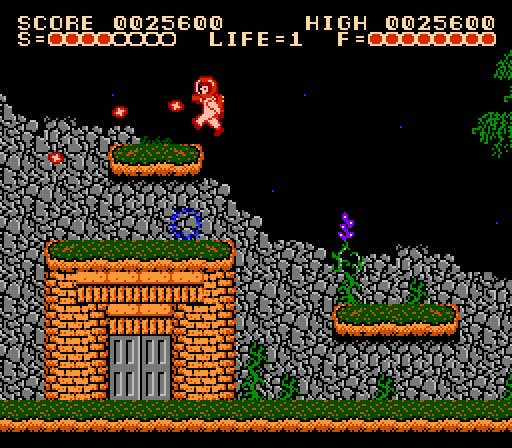
Jeremy Parish, Editor-in-Chief
Worst game I've ever played…? Hmm, that's a really hard question. I could fall back on the cliché and say Pac-Man for Atari 2600, which I played when I was a wee child… and even then I realized, "Man, this is garbage."
But no. Let's look further along the timeline to the days when I was less a polywog and more a fully-formed human, having developed more taste and more ability to define right and wrong. I'd also developed an interest in girls, and one day the girl I had taken a particular interest to told me, in elaborate detail, about a cool video game she'd played on her computer. She made it sound extraordinary, and the fact that I was head over heels in hormones for her certainly didn't hurt.
So imagine my surprise when a few months later I'm strolling through the rental shop and discover they've ported this game to NES — finally, I could play Captain Comic.
Captain Comic, of course, had been converted by Color Dreams, the company that would eventually become Christian games publisher Wisdom Tree as the equivalent of picking a fight then quickly putting on a priest's collar and shouting, "You wouldn't punch a priest, would you?" Color Dreams was the most notorious of the publishers who released games for NES without an official license. And, as I discovered upon playing Captain Comic, they were denied a license for a good reason: Their games were awful.
Captain Comic was the scrapiest of bottom-of-the-barrel-scraping 8-bit platformers, a shoddy mess that clearly aimed to take on the likes of Mega Man and Contra without anyone involved stopping to look at what made those games so beloved. Things like good level design, responsive controls, fair and interesting gameplay. It was a Z-grade Atari 2600 or Spectrum game masquerading as a Z-grade NES game, and in that commitment to plumbing the depths of awfulness it proved that all game systems are united by misery.
Needless to say, the gulf between the game I played and the game my crush had described to me was immense, perhaps immeasurable. I still got butterflies whenever we talked, though.
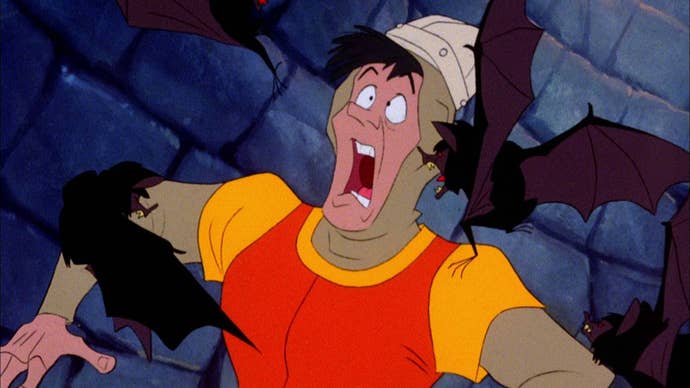
Jaz Rignall, Editor-at-Large
This might seem a slightly odd choice since it's a coin-op, but once I explain the context, hopefully you'll understand why I was so utterly disappointed in this game.
It was back in 1983, and I'd seen a couple of different magazine features about Dragon's Lair, a brand new arcade machine that had revolutionary technology that essentially delivered cartoon-quality graphics. Both previews were exceptionally hyperbolic, and basically made out like this was the Second Coming. The new laserdisc technology that drove it sounded incredibly exotic, and all the pictures I'd seen of it looked absolutely stunning. I just couldn't wait to play it. The problem was, I lived in a very remote area of Great Britain, and while we had a couple of great local arcades, neither of them had any plans to buy a Dragon's Lair machine, because they were extremely expensive.

Since this was back in the olden, pre-Internet days, I grabbed a couple of phone books and called every arcade that was listed to see whether I could find a place that had one, and lo and behold, I eventually found an arcade that did in a place called Swansea, about 70 miles away. Still, I was determined to play this awesome new piece of technology, so a friend and I bought a pair of tickets and took the four-hour bus ride to what was essentially the nearest city.
I know you know what's coming next, but when we finally got to the arcade, we found the Dragon's Lair machine and dropped in five 10 pence pieces - which was five times more than an average arcade machine credit - and started to play. That's when I discovered the nature of quicktime play. For some reason, I thought I'd actually be controlling the cartoon character just like you do a video game sprite. Of course, far from it. I was nudging the joystick at key moments when the screen flashed, and didn't feel connected to the gameplay at all. Sure, the graphics looked amazing, and there were some funny moments during the action, but it just seemed completely lame to me. This wasn't a game - it was a crappy multiple-choice test, and not a very well designed one at that.
I died fairly quickly, and I decided I really didn't want to spend any more money on the game, particularly as I only had the cash for three more games - or I could use my money for 15 credits on the rest of the coin-ops in the arcade. So I opted for the latter.
A little later in the day, I watched with a small crowd as a local player went all the way through the game, and that was a fun viewing experience. He made it look like a fairly seamless cartoon, and that was cool. But I still thought the game was a big, fat turkey - because it just didn't really feel like a game at all. But then, that's QTE action for you. I felt that way then, and still feel that way now.

Mike Williams, Associate Editor
I'm a Marvel Comics guy. I love the X-Men. I also love deep, engrossing RPGs. On paper, X-Men Destiny sounded like everything I ever wanted. Players were supposed to be able to create their own neophyte mutant, deciding from a wide variety of powers. Like Bioware games, choice and consequence was the name of the game, with players ultimately deciding if they'd join Magneto's Brotherhood or Cyclops' X-Men. It even had input from then-current X-Men writer Mike Carey.
What we got was a boring, plodding action game where you could choose between three characters with set abilities. The only real choice was going with the X-Men or Brotherhood at the end of the game. And the game was plagued with bugs and glitches. It was a rushed, poor product and legal issues between Silicon Knights and Epic Games led to the broken mess being pulled from store shelves.
Here's the thing: I'm still waiting for someone to deliver on the original promise. I was a Bioware/Obsidian-style game with superpowers. I'd love to create my own mutant and interact in the world of Marvel's X-Men. I worry that X-Men Destiny has razed that space to the ground and salted the earth in its wake. I'd even take the game without the X-Men mythos attached. Instead, I just shake my fist at the sky and lament how bad X-Men Destiny was.
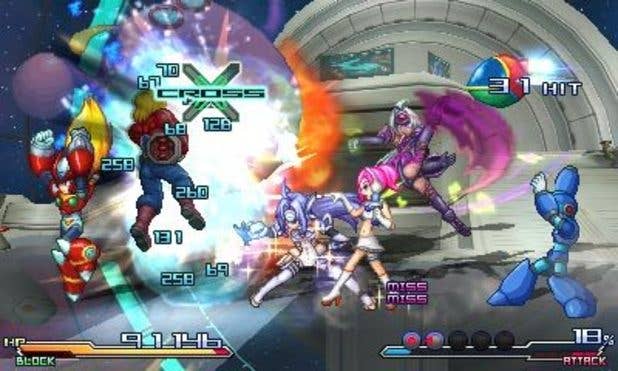
Kat Bailey, Senior Editor
I've played quite a few over the years, so it's hard to think of just one. It takes an especially bad game to really stand out in my mind, and I'm not sure any of them deserve to be known as the "biggest turkey."
With that said, I really disliked Project X Zone. I resented its shallowness, its repetition, and its inevitable comparisons to Super Robot Taisen—the better series by far. I felt it drew attention in large part because it had some very nice sprites, it included much-loved games like Valkyria Chronicles, and because its so rare for Bandai Namco to release games of this sort.
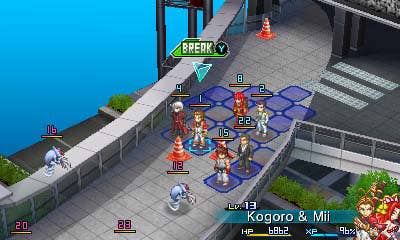
So why hate it so much? Well frankly, it's a terrible representation of strategy game design. It's tough to go into too much detail in the space of like four paragraphs, but every character action boils down to inputting the same combo chains ad nauseum, with little to no tactics to speak of. On top of that, the near lack of character customization means that anything resembling party building strategy is almost nil. Oh, and the story is almost non-existent, functioning mostly as an excuse for a collection of ill-fitting characters from various games to wander from dimension to dimension fighting bad guys. It's a shallow, vacuous game that can barely be classified as an RPG, but it gets a free pass from people who should know better because its pretty.
Deep breath.
Anyway, I didn't like it very much. It was one of the most teeth-grindingly boring reviews I've ever had to conduct. I suppose that makes it as good a candidate for "Biggest Turkey" as any.
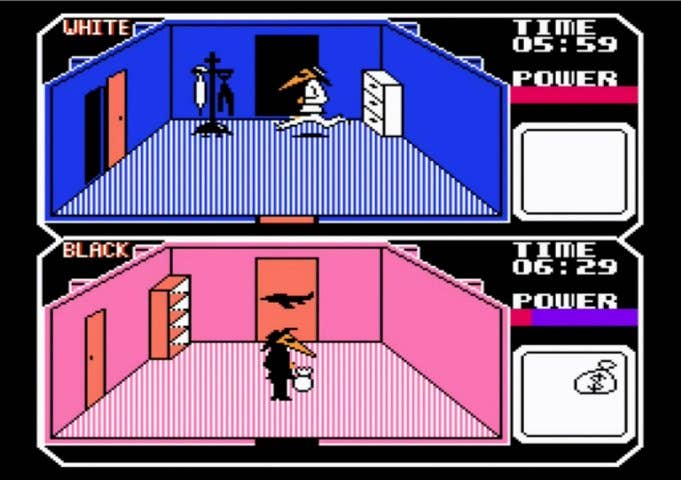
Bob Mackey, Senior Writer
As a kid, I spent way too much time playing Nintendo and reading MAD Magazine, so of course I picked up the sole NES game branded with two of that publication's most popular characters. And this is where I learned a very important lesson about licensing.
From what I've read, Spy vs. Spy seems to be treasured by fans of the Commodore 64, where it debuted in 1984. Measured by that standard, it's not particularly terrible. But as an NES game released in 1988—the same year as Bionic Commando, Blaster Master, and Ninja Gaiden—it's shockingly primitive. If you've never played it, Spy vs. Spy focuses on competitive split-screen action that tasks both spies with finding a prescribed number of items and fleeing the level ASAP. And, as expected from MAD's brand of technical espionage action, the spies can place traps inside the small amount of furniture, picture frames, and coat racks scattered about in every room. Oh yeah, and you can also knife your opponent to death if you prefer a more direct approach.
Again, I'm sure this game gave Commodore 64 players plenty of fun—it's a pretty good adaptation of the source material, after all—but the NES port doesn't do much to spruce up the original to meet late-'80s standards. Simply put, it's hard on the senses: The rooms you travel through are repetitive, sparse and painted in garish colors, and the music... God, that music. When it's not being drowned out by the shrill sound effects, you're treated to gaming's most droning dirge—one that'll be stuck in my head until they put me in the cold, cold ground. I've heard doorbells that had more sophisticated composition. (At least this guy managed to make something of it.)
To make things worse, Spy vs. Spy is essentially a multiplayer game, but there was no way I wanted my friends to suffer those audio and visual atrocities alongside me. So I had no choice but to play it alone out of sheer obligation, lamenting the fact that I didn't pick up one of the several other options available to me at Toys R Us that day. From that point forward, I would be extremely careful with my purchasing decisions, and though I still managed to slip up from time to time, nothing would leave the same degree of mental scars as Spy vs. Spy.








